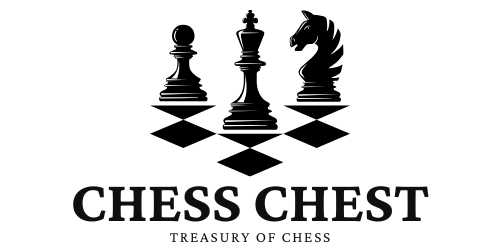In the world of chess, a solid chess engine can be a game-changer. Whether you’re an aspiring chess enthusiast or a seasoned grandmaster, a reliable chess engine can analyze moves, reveal mistakes, and even introduce new strategies. Chess engines empower players to develop their skills, explore creative tactics, and prepare for competitive play. In this review, we’ll dive into the best chess engines of 2024, examining their unique features, strengths, and what makes each one ideal for different types of players.
What Makes a Great Chess Engine?
When choosing a chess engine, several key qualities define the best of the best:
- Strength and Elo Rating: Top engines boast ratings well over 3000, often outperforming human grandmasters. The higher the engine’s rating, the stronger its analysis and play.
- Analysis Capabilities: A great chess engine digs deep into moves, offering insights on the best lines and detecting errors or missed opportunities in any game.
- User-Friendliness: Accessibility matters, and a user-friendly engine enables seamless analysis for beginners and advanced players alike.
- Compatibility: Ideal engines are compatible across platforms, allowing players to use them on PCs, Macs, and even mobile devices.
- Training Features: Engines that incorporate training options—such as puzzles, analysis modes, and move suggestions—offer an added layer of learning potential for players.
Top Chess Engines in 2024
Let’s explore the top chess engines available, each with unique strengths tailored to different playing needs and styles.
1. Stockfish
Stockfish remains one of the strongest and most widely-used chess engines. Known for its open-source nature and constant updates from the chess community, Stockfish is free to use and delivers a powerful punch in terms of performance.
- Strength and Elo Rating: Stockfish consistently ranks as one of the highest-rated engines, surpassing most others in strength.
- Key Features: Customizable depth and analysis modes, strong tactical insight, and community support.
- Best For: Advanced players looking for a powerful, free-to-use tool.
- Pros: Free, high strength, accessible on multiple platforms.
- Cons: Limited built-in training features; primarily focused on analysis.
2. Komodo Dragon
Komodo Dragon stands out for its unique analysis style, using both brute-force search and selective search to generate highly dynamic positions. It’s a great choice for players who want more than just depth but also a unique, creative approach to analysis.
- Strength and Elo Rating: Among the highest-rated engines, Komodo Dragon is a consistent powerhouse.
- Key Features: Dual analysis options, adjustable playing styles for customized training.
- Best For: Advanced users and players looking for creative engine play.
- Pros: Dynamic analysis, flexibility in playing style.
- Cons: Subscription or one-time fee required.
3. Leela Chess Zero (LCZero)
LCZero brings a neural network-based approach to the chess world, making it a revolutionary tool. Inspired by AlphaZero, LCZero “learns” from games rather than relying on brute-force calculations, providing a different analytical perspective.
- Strength and Elo Rating: Highly competitive, often giving Stockfish a run for its money.
- Key Features: Neural network analysis, adaptive playstyle, stronger in slower, deeper searches.
- Best For: Players seeking cutting-edge analysis and a unique approach to game study.
- Pros: Neural network sophistication, excellent for slower-paced, in-depth analysis.
- Cons: Requires a powerful GPU for optimal performance; steeper learning curve for beginners.
4. Fritz
Fritz is known for its balanced features, combining analysis, training, and an engaging user experience. Fritz includes a suite of multimedia lessons, puzzles, and in-depth tutorials, making it a strong choice for players looking for a more comprehensive chess study tool.
- Strength and Elo Rating: Strong, though not at the level of Stockfish or Komodo Dragon.
- Key Features: Multimedia lessons, interactive puzzles, tailored training modes.
- Best For: Intermediate players who want a mix of analysis and guided learning.
- Pros: User-friendly, great training options, affordable.
- Cons: Not as powerful as Stockfish or Komodo Dragon for raw analysis.
5. Houdini
Known for its tactical prowess, Houdini was designed to analyze highly complex positions, making it an excellent choice for players looking to sharpen their tactical play. Its analysis is quick and reliable, although it doesn’t match the depth of engines like Stockfish.
- Strength and Elo Rating: Very strong, particularly in tactical scenarios.
- Key Features: Speedy analysis, best for tactics-focused play.
- Best For: Players looking to improve their tactical sharpness.
- Pros: Fast, reliable, excellent for complex tactical positions.
- Cons: Lacks the depth and training tools of engines like Leela or Fritz.
Choosing the Right Chess Engine for You
To make the most out of these engines, it’s essential to find one that matches your goals:
- For Beginners: Fritz is a strong choice, thanks to its multimedia features and engaging lessons.
- For Intermediate Players: Komodo Dragon and LCZero offer flexible learning and analysis, with LCZero providing a unique neural network approach for creative insights.
- For Advanced Players: Stockfish is unbeatable in power, while Houdini’s tactical insights and Komodo’s dynamic play style add depth to advanced strategies.
Summary
Whether you’re practicing tactics, studying famous games, or analyzing your matches, these chess engines each bring something special to the board. Stockfish and Komodo are top choices for power and flexibility, while Fritz and Houdini offer a more balanced, training-oriented experience. And for those seeking the latest in chess innovation, LCZero’s neural network provides a fascinating alternative. With the right chess engine, you’re well-equipped to elevate your skills and enjoy the game at every level.




